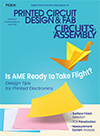Touch-Screen Shipments Expected to Reach 833 Million by 2013
Published: 20 May 2008
by Staff
The worldwide market for touch-screen modules will amount to 341 million units and $3.4 billion in 2008. iSuppli forecasts the market will grow to 833 million units by 2013, expanding at a CAGR of 19.5% from 2008. Global touch-screen module revenue is forecast to grow to $6.4 billion by 2013, rising at a CAGR of 13.7%.
“The total number of touch-screen technologies including those in production and emerging products has increased from 16 distinct approaches in mid 2007 to 20 different touch-screen technologies this month,” said Jennifer Colegrove, senior analyst for emerging displays at iSuppli. “New touch-screen technologies are being commercialized and 12 types of touch-screen technologies now have commenced mass production.”
But this market is still volatile because of numerous acquisitions occurring while touch-screen applications either flourish or begin to die out, Colegrove said.
Catalyzed by the iPhone, sales of touch-screens using projected capacitive technology are growing dramatically. Projected capacitive touch-screen technology is more durable and has better transmittance than the more commonly used resistive technology. More touch-screen manufacturers are developing and commercializing this type of screen, says iSuppli. The average pricing gap between the capacitive and resistive display types is dwindling, making the technology more attractive.
Projected capacitive technology grew at the fastest rate of all the touch technologies in 2007, with 10.5 million units shipped, for a value of $222 million.
iSuppli forecasts that projected capacitive touch screens will maintain high growth momentum and reach 123.5 million units and $1.3 billion in revenue by 2013.
Many providers of alternative touch-screen technologies have announced multi-touch capabilities, such as touch-screen designer and developer NextWindow’s optical imaging camera-based touch screens. Other examples include IR Touch Systems Technology’s infrared touch screen and Stantum (formerly JazzMutant), which has offered a multi-touch music controller since 2004.
Resistive is the most commonly used touch-screen technology in the marketplace, accounting for 91% of global units in 2007, according to the research firm. However, due to low ASPs for this technology, it accounted for only 52% of the total touch-screen market revenue.
Although it is not very durable and has poor transmissivity, resistive’s low price and high responsiveness to both finger and stylus touch has made it the No.-1 touch-screen technology in terms of unit shipments during the last few years.
However, the resistive market now is suffering a shortage of indium tin oxide (ITO) film used to make such screens due to production expansions among several major manufacturers and limited numbers of ITO film suppliers, says iSuppli.
With several large manufacturers expanding capacity, other types of transparent conductive materials such as conductive polymer, carbon nanotube and Antimony Tin Oxide (ATO) have an entry-to-market opportunity now. In fact, Fujitsu already has started using conductive polymer for some of its resistive-type touch screens.
Despite the total of eight distinct, commercialized touch-screen technologies – i.e. resistive, surface capacitive, projected capacitive, surface acoustic wave, infrared, bending wave, active digitizer and optical imaging – even more novel touch-screen approaches are being invented, including new touch technologies from N-trig, Sony, Sharp, TMD and Samsung. Several companies recently have announced plans to commence touch-screen manufacturing. Furthermore, several mergers and acquisitions have occurred, launching new participants into the market, says iSuppli.
Press Releases
- PARMI Enhances Support for Brazilian Electronics Manufacturers with New Local Partnership
- ZESTRON Expands Capabilities with Addition of the EPS by i-Tech AG 75 Pallet Cleaning System
- BMK strengthens its coating expertise for electronic assemblies with a technology initiative
- Altus Group Strengthens Leadership with New Operations Director







